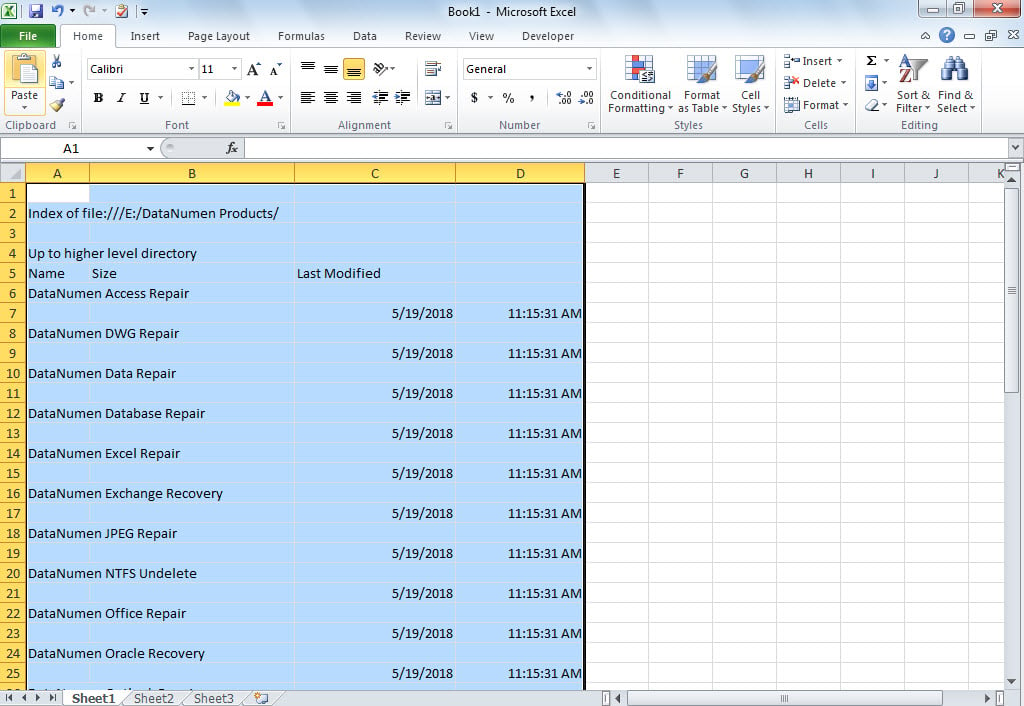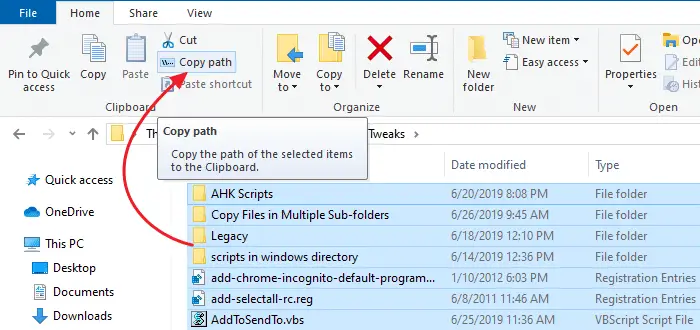


- #WINDOWS 10 LIST DIRECTORY CONTENTS RECURSIVELY HOW TO#
- #WINDOWS 10 LIST DIRECTORY CONTENTS RECURSIVELY ZIP#
Creation time of the files, folder and directories can be listed with the /T:C option like below. dir /S Display Recursively Display Creation Time. Select files or folders whose size is equal to or greater than the specified size. Will recursively descend into the directory looking for files or folders. We will use /S option to list all files and folder recursively. Return a list of files based on specific criteria. The rmdir command parameters used to force the deletion: Optionĭelete the folder with all the sub-folders and files in it. Windows file system NTFS uses hierarchical structure for storing directories and files. To force the rmdir command to delete this folder, execute it as follows: C:\> rmdir /s /q To do that, use the cd command for example, cd. Change the directory to the folder you want to print the contents of. If you try to delete a non-empty folder from the Windows command prompt (CMD) you will get the error as follows: To do that, click Start, type CMD, then right-click Run as administrator.
#WINDOWS 10 LIST DIRECTORY CONTENTS RECURSIVELY HOW TO#
In this note i will show how to force the rmdir command to delete folders and their contents recursively without throwing any errors like “ The directory is not empty” or “ Access is denied“.Ĭool Tip: Windows touch command equivalent in CMD and PowerShell! Read more → Grep Command in Windows They want a list of all the individual files contained within the whole structure, so they can search that list for xyz.pdf or what ever.
#WINDOWS 10 LIST DIRECTORY CONTENTS RECURSIVELY ZIP#
If you want to recursively count folders and/or files in your parent folder, add the Recurse parameter to the previous commands, as follows: Recursively count all files and subfolders in a folder: (Get-ChildItem -Recurse Measure-Object). The user has received a folder which contains about 6 zip files, each of those zip files also contains four or more zip files and within each of those - going down about ten levels, there are more zip files. The rmdir command is a Windows rm equivalent in a Windows command prompt (CMD), that also can be used to force the folders deletion with all their contents. How to list all files recursively in a directory. Here’s a way you can save a complete list running Windows 10, Windows. The rm -rf command in Linux is used to force the deletion of folders and their contents recursively. How to Print Contents Of Folder/Directory in Windows 10, 8.1, 8 and 7 Tutorial.


 0 kommentar(er)
0 kommentar(er)
